Many people know that you can extend your growing season and protect even tender annuals through at least the first light to moderate frosts. This will keep your plants growing and showing while the days are still warm, so a drop in nighttime temperatures doesn’t end growing when the days are still perfectly capable of supporting plant life.
But did you know that all frost covers are not created equally?
Some of the old “stand by” frost covers that many of us were taught to use aren’t really a good idea.
There are good things to use to cover and protect from frost and there are bad -- those that will actually transfer cold and cause plant damage.
So, what should you use to cover and protect your plants from frost? And what shouldn’t you use?
Let’s look at the most popular choices and rate each, right or wrong.
Jump to:
Garden Row Cover or Frost Fabric: Right
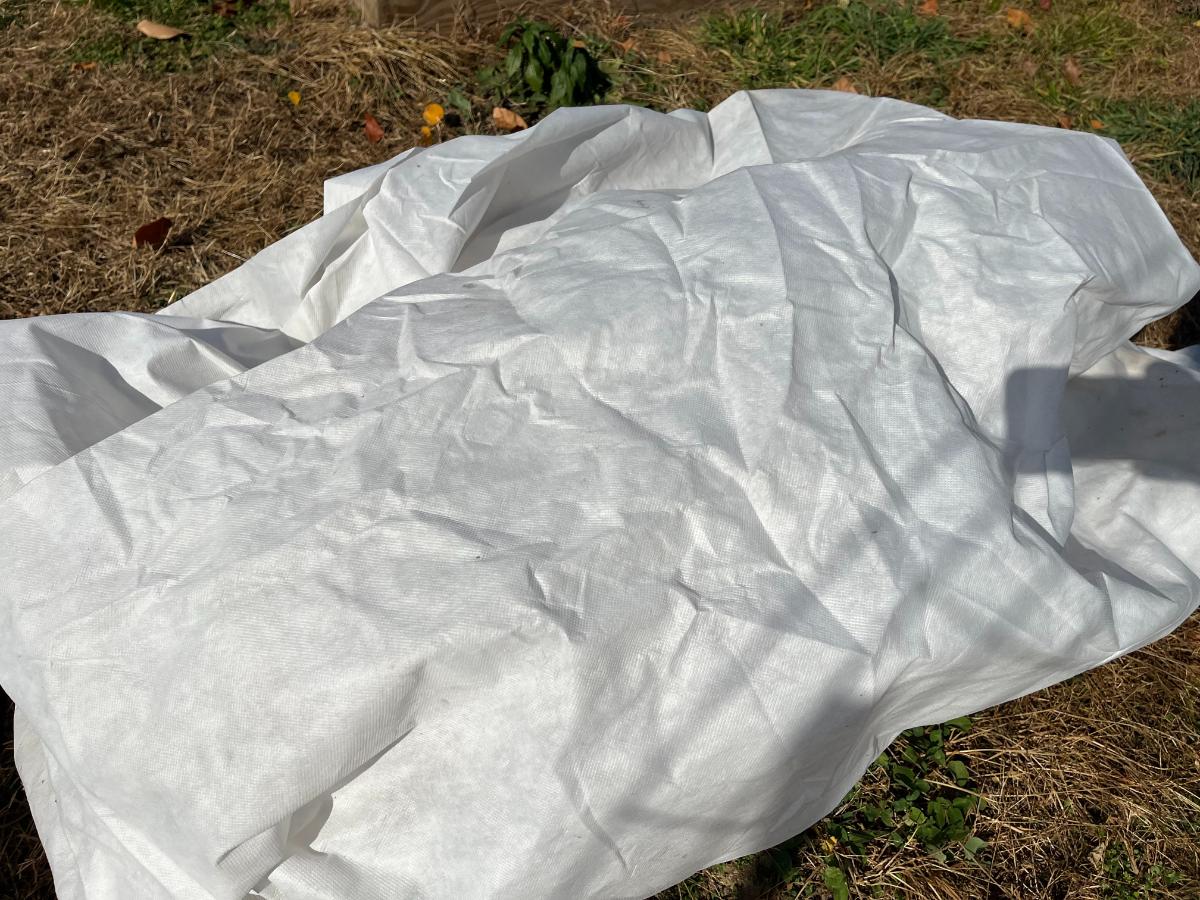
This is the “gold standard,” as they say, in frost protection.
Frost fabrics or floating row covers are the best choice because they were made for exactly this job. Both are basically the same thing.
Frost fabric and floating row cover are designed to allow for good airflow while also holding in heat. They can allow moisture from rains through, too.
The fabrics are light enough not to put excess weight on plants, so they won’t break them. But they are heavy enough to provide good warmth and keep heat held in around the plants. This raises the temperature around your plants, stops frozen water vapor from piling on and freezing, and keeps plant cells from freezing and bursting.
You will, of course, have to invest a little into frost fabric, so there is a cost involved. But the fabrics will last for years if they are picked up, properly cared for, and stored well (away from rodents!). Overall, the expense is fairly minor.
Bonus: The floating row cover has other good garden applications. For example, you can use it to protect plants from birds during ripening and harvest season. You can also use it at timed intervals to protect plants from insects like flying moths, beetles, and bugs and stop them from laying eggs or colonizing your garden patch.
Pros and cons of using garden frost fabric and row cover:
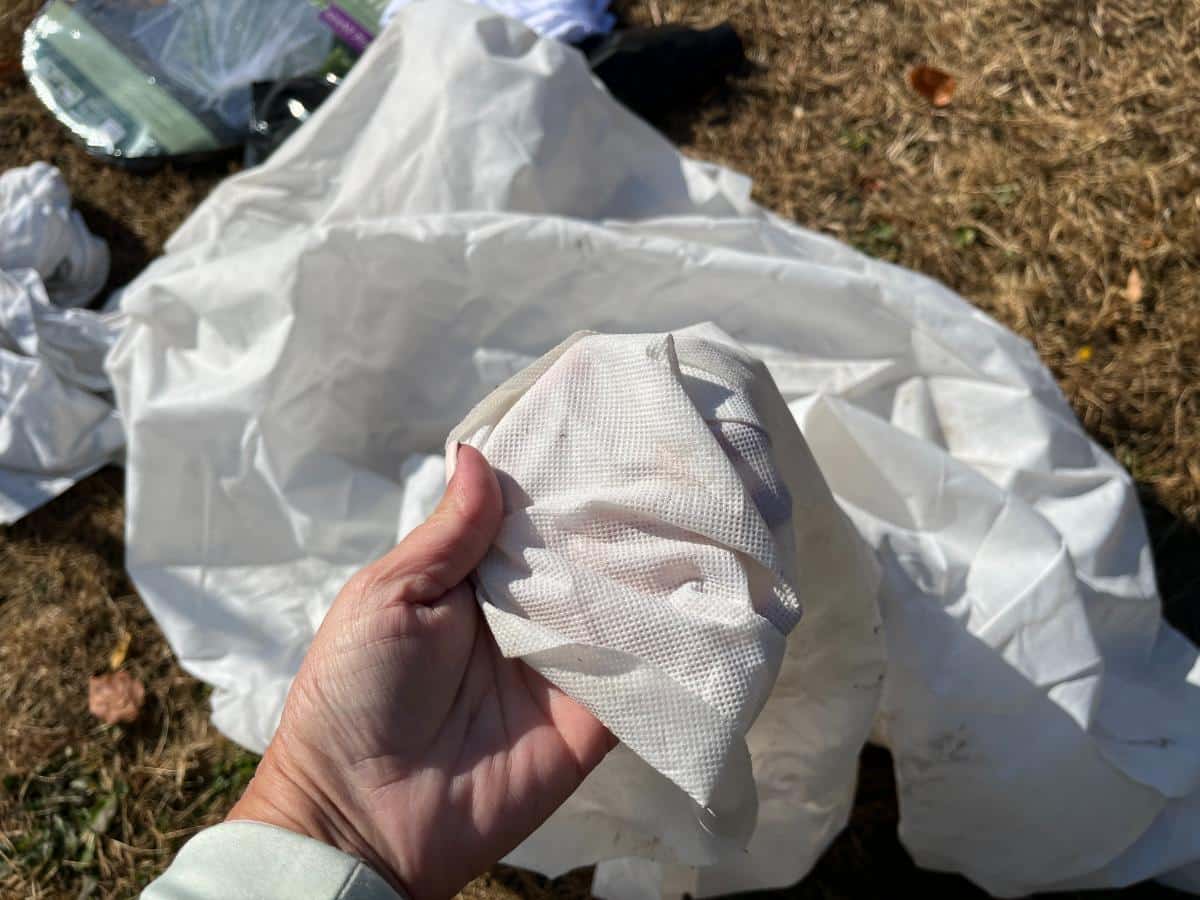
- Moderately priced, but likely the most expensive option
- Allows light and moisture through so they don’t have to be removed during the day
- Have other good garden uses, including pest protection
- Can blow off if not properly anchored
Old Sheets and Cloth: Right
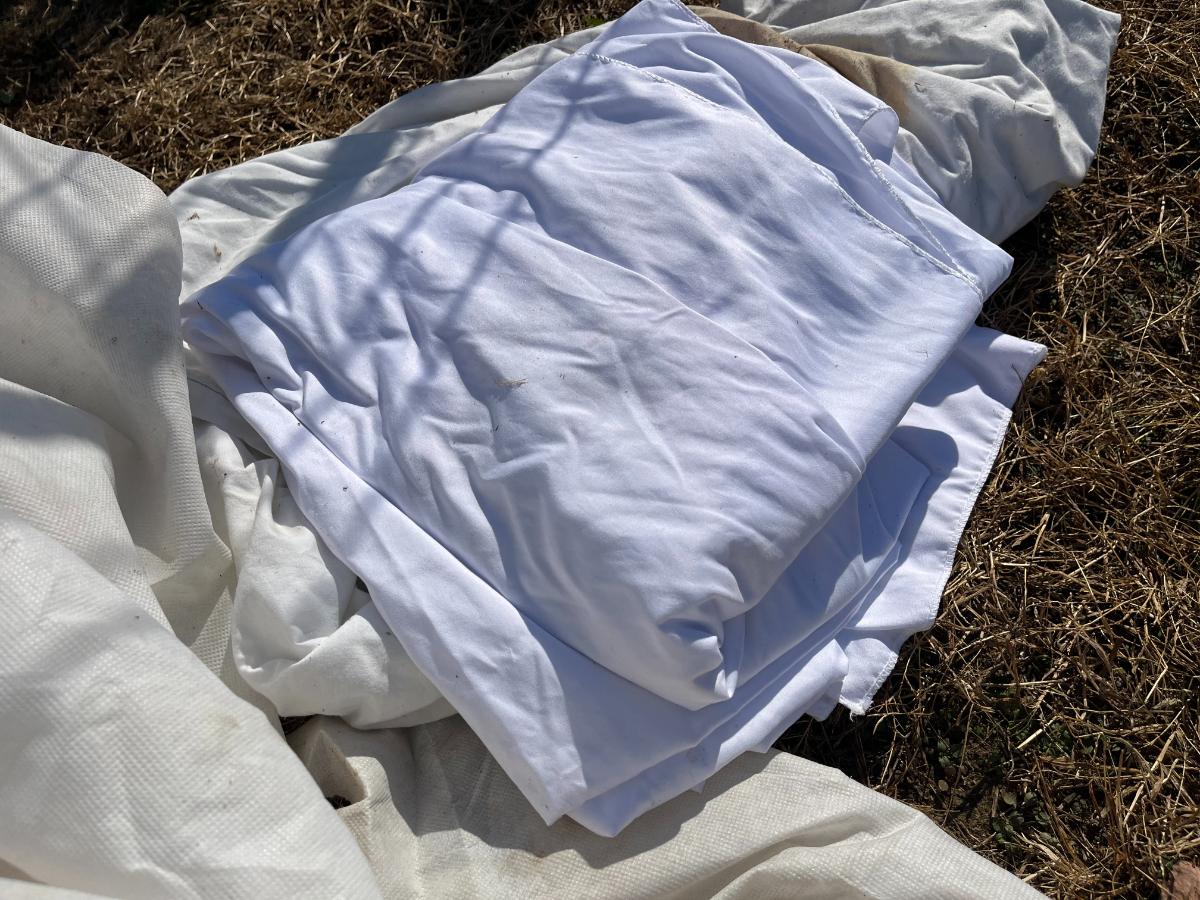
A cheap and easy way to gather frost protection materials is to hold on to large stretches of light to medium weight fabrics. Then, you can upcycle them into frost protection covers.
Some good household items that work well in retirement as frost covers include:
- Old sheets
- Pillowcases
- Cloth tablecloths (avoid plastic--see below)
- Light blankets
- Burlap
- Canvas tarps
Whatever cloth covers you use, including floating row cover and plant frost fabric, they need to be well secured. Frosty weather often comes with windy weather:
- Make sure the fabric is pinned down at four to six-inch intervals or weighted with bricks or rocks all the way around
- Don’t leave any long stretch where wind and breeze can blow up
- Make no unsecured space more than a few inches long
- Wind can easily get into even a one-foot opening and balloon up your fabric, then blow it off
Pros and cons of using old sheets and cloths:
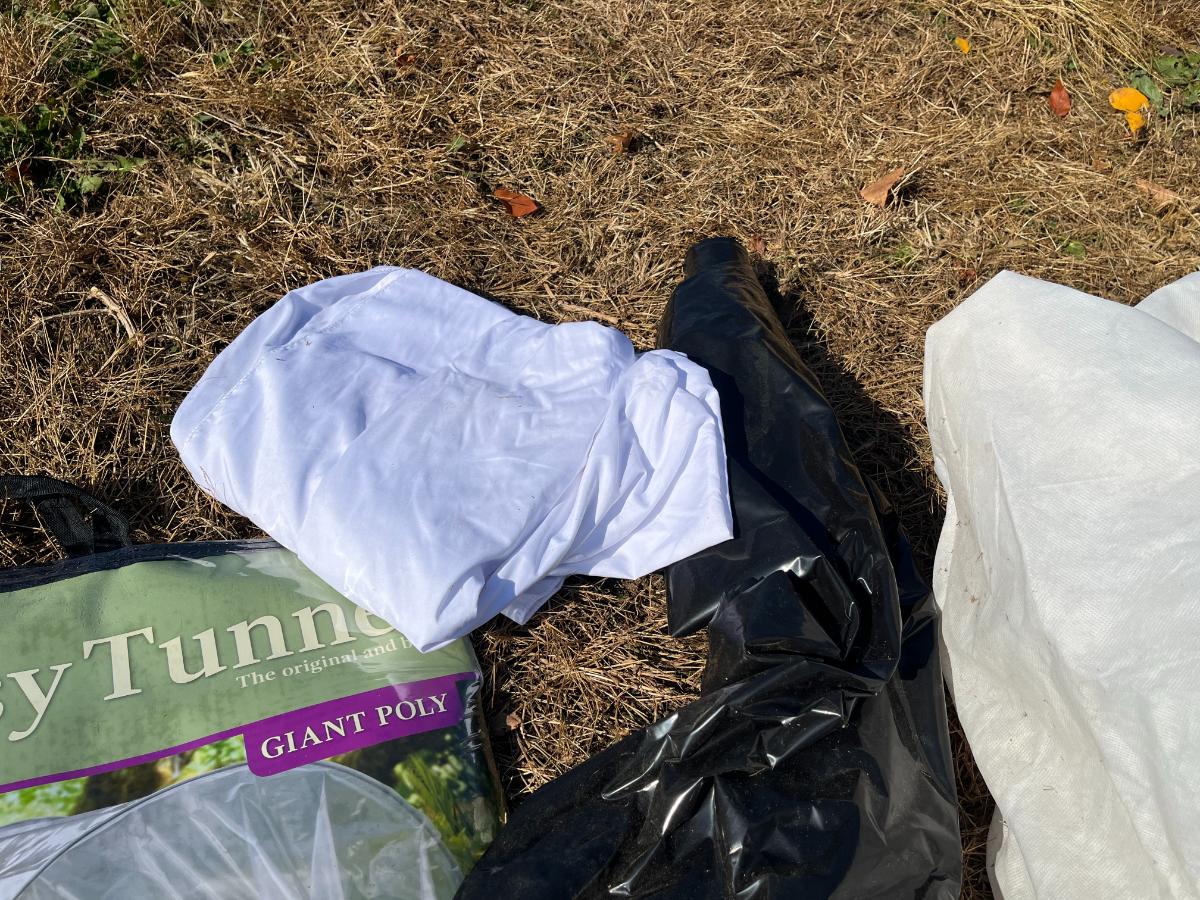
- Cheap (free)
- Need to be removed during the day to allow access to light
- Probably have some on hand if a frost sneaks up on you
- Don’t need to order or rush out to buy at a store
- Lasts for many years
- May be lighter than frost fabric or plastic, so you may need to double them up if they seem thin
- Good way to upcycle old cloth pieces or burlap you might otherwise be throwing away
- Can blow away if not well-anchored
- Burlap and some other cloths can do double duty and can be used to wrap shrubs and plants for winter or used as a weed barrier later on
- You may have things like burlap left from other uses or crafts projects (just make sure it is large enough to do the job)
Plastic: Right and Wrong (Depending on How you Use it)

Plastic used to be the go-to for covering plants for frost protection (at least before good row covers and frost fabrics came around).
Plastic will help hold in heat and will help to protect plants, but it can also transfer cold to plants and cause damage. It works as a sort of conductor of cold for things that it touches.
If you are going to use plastic covers of any sort, you need to take care to keep the plastic up off the plants and prevent it from touching them.
If you can do that, you can use plastic.
Here are some ways you can use plastic without allowing it to touch plants and transfer the cold:
- Use low tunnel or caterpillar systems with a built-in framework
- Install small poles or stakes slightly higher than the top of the plants to hold up the cover, then drape the plastic over the patch
- Weight or pin the plastic all along the sides, as outlined above
- Use rigid plastic containers or cloches that are large enough not to touch the plants
- Overturned plastic pails can make good frost-protecting cloches
- It’s smart to put a heavy rock on top of buckets and cloches to keep them from blowing away
Pros and cons of using plastic for frost protection:
- Can transfer cold if touching plants
- Needs to be staked to hold it up off the plants
- Must be well-weighted or pinned to prevent blowing away
- Has other garden uses like using as a weed barrier (but after it’s used as a weed barrier, if it has holes, it will not be a good frost cover again)
- Cost is involved if it’s not something you have on hand already
- Not as good an option as frost fabric, so if you’re buying something for frost protection, your money is better spent on the fabric
A Few Other Tips for Protecting Your PLants through Frost:
- Water thoroughly during the daytime before frost is expected to hit
- Plants that are moist and well-watered can tolerate frost much better and hold heat better, too
- Soil that is moist also holds and radiates heat better
- Prioritize your plants
- Cover the most tender plants and/or the plants you care the most about
- Watch the temperature forecast and determine how hard the frost is expected to be to decide what needs covering (many semi-hardy and hardy plants will survive light to moderate frosts)
- Cover plants during the day; don’t wait until night
- Cover while the sun is still up
- Plants covered during the warmth of the day will hold heat in better; covers will help insulate and retain heat inside the covering as the sun goes down
- Remove solid covers during the day so the plants can get the sun, light, and moisture they need
- Recover as needed if frost is expected at night
- Frost fabrics and row covers can transmit light for growing and do not need to be removed if the temperatures are expected to stay low

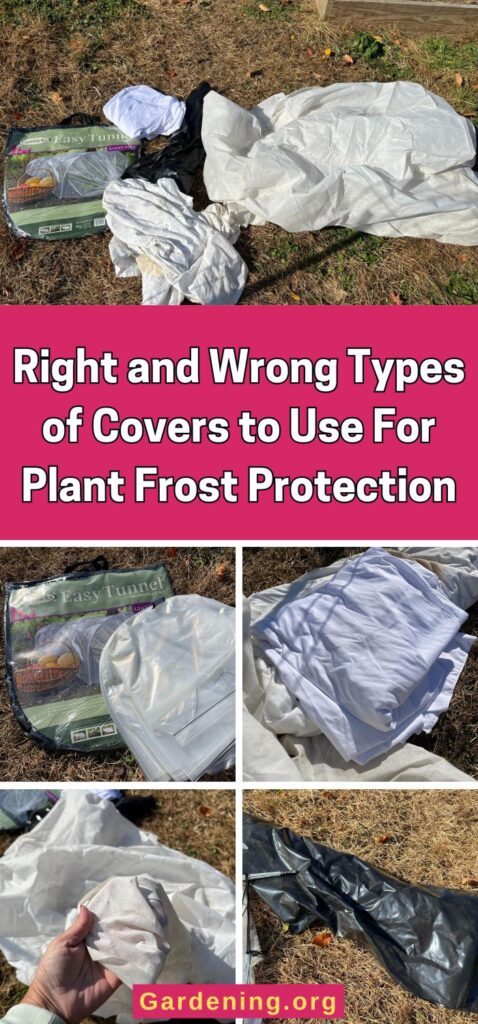






Leave a Reply